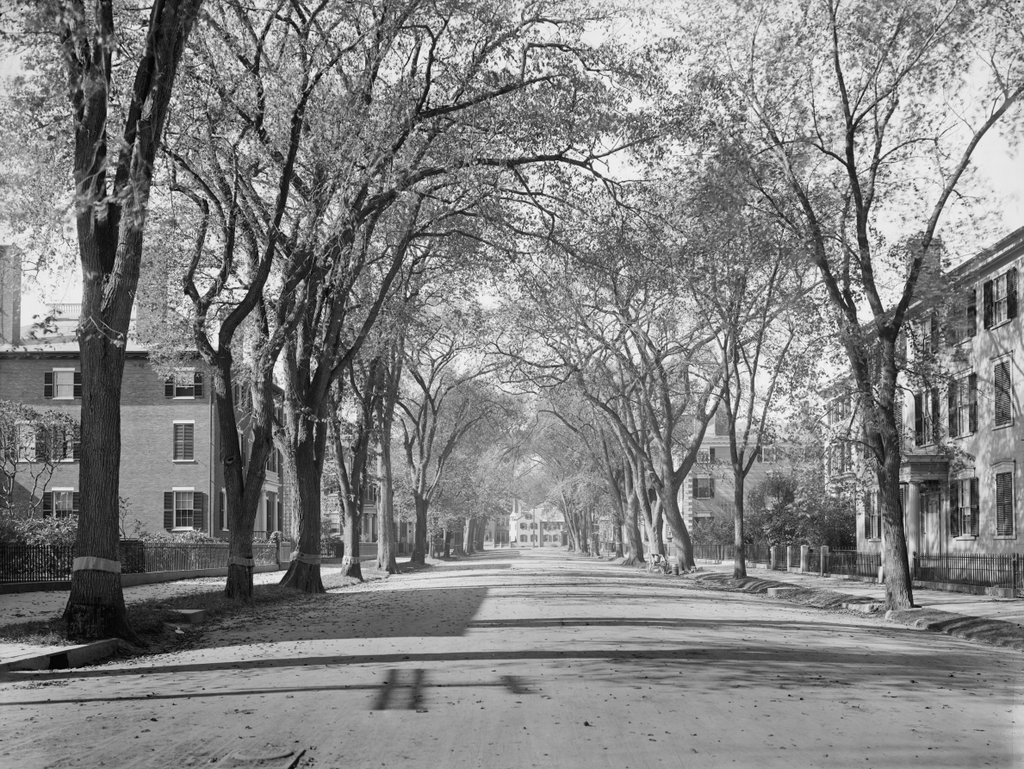The view looking west on Chestnut Street from the corner of Pickering Street, around 1906. Image courtesy of the Library of Congress, Detroit Publishing Company Collection.
The scene in 2023:
During the late 18th and early 19th centuries, Salem was one of the most prosperous seaports in the United States. This was reflected in its architecture, which included many large, fashionable Federal-style homes that were built for merchants and other wealthy Salem residents. Many of these homes are located on the streets immediately to the west of downtown Salem, including Chestnut Street, as shown in these two photos.
Chestnut Street was laid out in 1796, and over the next few decades it was developed with stately homes. Only one house on the street is known to have been the work of prominent Salem architect Samuel McIntire, but his influence is clearly evident in the designs of the other houses here. Many of the houses are brick, although some are wood, and they are generally three stories high, have a hipped roof, and have a roughly square footprint. Most were designed as standalone single-family homes, but there are a few that were built as adjoining two-family homes.
By the time the top photo was taken at the turn of the 20th century, the street was already recognized as an important Salem landmark. Not only were the houses themselves significant, but the streetscape itself was also notable for the many elms that lined the street, creating a tunnel-like effect, as shown in the top photo.
Sadly, nearly all of the elms are gone now, likely as a result of Dutch Elm Disease. Today, the street is still lined by trees, but their lower canopies do not have the same effect that the elms once had. Despite the loss of the elms, though, not much else has changed in this scene. The tree cover makes it hard to tell, but all of the homes in the top photo are still standing. The street is one of the finest collections of Federal-style architecture anywhere in New England, and it forms the centerpiece of the Chestnut Street District, which was added to the National Register of Historic Places in 1973.


